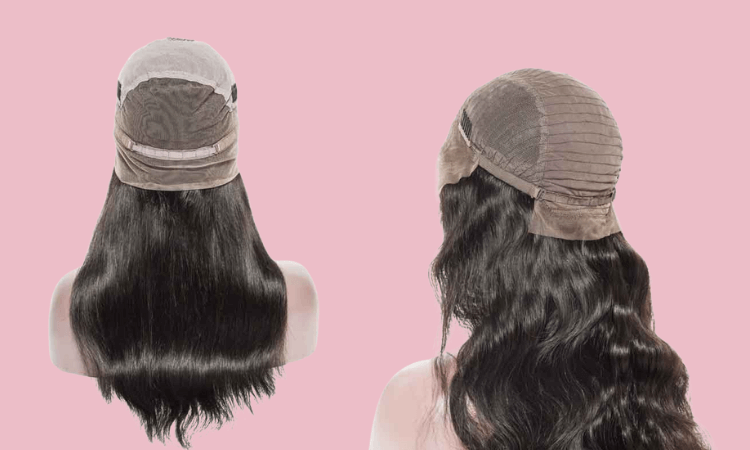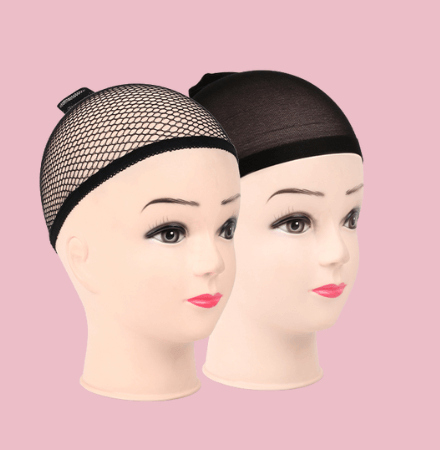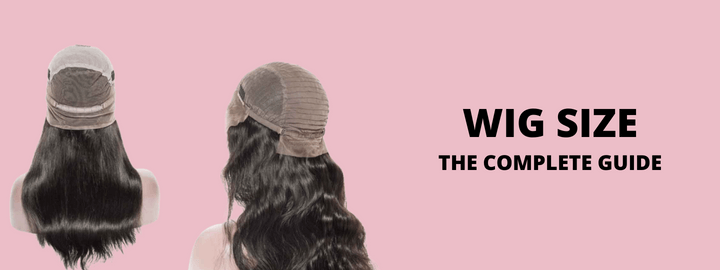Buying a wig whose size is not too small or too big will make you feel more comfortable. A wig can be tight when it is too small, and if it is too big, it might slide and fall off your head.
Usually, an average wig cap size would fit most wearers. But if fitting into an average size is not a safe bet, consider getting a custom wig instead.
Below, we created a simple guide to help you learn about wig size, including how to measure and adjust it.
Let’s begin!
What Size Wig Cap Should I Get?
Most pre-made wig sizes are often fixed. Therefore, finding one that fits is easy as long as you know your correct wig cap measurements. However, if you can’t find a good fit, consider choosing a wig customized to your head.
I recommend taking the circumference measurements at least 3 times to ensure you get a wig cap that fits. Here is a complete wig size chart to help you find the right wig cap size.
| Wig Size | Ear to Ear | Circumference | Front to Back | Temple to Temple | Nape of Neck |
| Child | 12″ | 20″ | 12″ | 10″ | 4″ |
| Petite | 13″ | 21″ | 13.25″ | 11″ | 4.5″ |
| Petite to Average | 13.25″ | 21.5″ | 13.75″ | 11.5″ | 5″ |
| Average | 13.5″ | 22″ | 14.25″ | 12″ | 5.5″ |
| Average to Large | 13.75″ | 22.5″ | 14.75″ | 12.5″ | 6″ |
| Large | 14″ | 23″ | 15.5″ | 13″ | 6.5″ |
How to Measure Your Head for a Wig?
Having the correct wig cap size measurements is vital when getting a pre-made or custom wig that fits your head well. You will need a soft measuring tape to correctly measure your head for accurate results.
Below is an easy procedure for measuring your head before getting a wig.
Step-by-Step Procedure
Step 1: Set Your Hair
First, style your hair into straight-back braids. Ensure you do not braid the hair too tight to avoid creating tension on the roots.
If you have longer hair, you can section the hair down the middle, brush it back, and twist it till it starts rolling. Then secure the loose ends using a rubber band and bobby pins.
Moreover, you can put on a wig cap to press the hair down further and make it as flat as possible. Ensure to set the hair in the way it would when wearing a wig.
Note: Taking measurements without setting the hair well may alter the wig size.
Step 2: Ear-to-Ear Measurement
Start by taking the zero mark of the measuring tape and placing it on the top of one ear. Then, run the tape across your head to the other ear.
Ensure there is no slack by positioning the tape not too far to the back or the front above the crown of the head.
Note: This is the most essential measurement. It makes the wig hug the crown with a comfortable fit. Therefore, always use the ear-to-ear measurement if all your measurements don’t equal one size.
Step 3: Measure Wig Circumference
Run the tape to determine the measurement along your hairline. Start from the front center of the hairline and slide the tape toward the nape of your neck.
Then, go all around the head till the tape meets the other end where the measurement began.
Ensure you run the tape behind each ear. Otherwise, you might get extra inches and derive the wrong results.
Note: Usually, most wigs have an adjustable strap that tightens the circumference by around 1 – 1.5 inches.
Step 4: Front-to-Back Measurement
Place the tape in the middle of your hairline. Then, move it over the crown of your head back toward the nape of the neck. Once at the nape, ensure the tape is well positioned before taking the readings.
Step 5: Temple-to-Temple Measurement
Place the zero mark of the measuring tape at the temple on one side along the hairline. Now proceed as you wrap the tape towards the back of your head. Then, bring it back around to the other temple while tracing along the hairline.
Ensure the measuring tape covers the most curved parts of your head for accurate results.
Step 6: Nape Measurement
Position the tape measure at one point on the nape of the neck, ensuring it aligns with the bottom of your earlobe. Now move across the width of the hairline to the other spot of your nape.
Note: The correct nape measurements will prevent bulges and keep the wig snug for custom wigs. This way, it sits comfortably at the nape of your neck without slipping.

How to Adjust a Wig Cap Size?
Adjusting the wig cap size can help in customizing whichever wig you want to suit your head’s size. By taking out the excess fabric, you will make the wig fit better and feel comfortable.
To adjust a wig cap, you need a canvas head, T-pins, a U-shape needle, and soft measuring tape. Follow these steps to adjust a wig cap size for a perfect fit.
Step 1: Secure Wig Cap
Place the wig cap over the canvas head. Then, align its edges along the canvas head where the natural hairline is usually located.
After this, keep the cap secure using t-pins to prevent it from sliding or slipping. You will notice that the cap has extra space that will otherwise be loose on your head.
Note: If the wig cap size is small, the canvas head should also be small. This goes for average and large cap sizes as well. You can know the proper cap and canvas head sizes using your exact head measurements.

Step 2: Fold Extra Fabric
Fold the excess fabric gently on the left side of the wig cap and pin it down using t-pins. Ensure the fabric lays flat on the canvas head. Again, try not to over-stretch; otherwise, the cap will get too tight and uncomfortable.
Step 3: Sew Wig Cap
After pinning down all the excess fabric on the cap, take the u-shape needle and sew the area down uniformly.
Step 4: Repeat
Repeat the same step on the other side of the wig cap. After finishing, the cap should snugly fit on the canvas head without bumps. Consider trying it on to make sure it fits right.
Note: The excess fabric will not only be on the sides of the cap. Sometimes, you may notice them at the crown or around the wig cap edges.
Final Thoughts
Now you know all about wig size. You should also be able to correctly measure your head for a wig and adjust a wig cap size. Moreover, consider purchasing a wig that fits well from the best wigs online stores.





